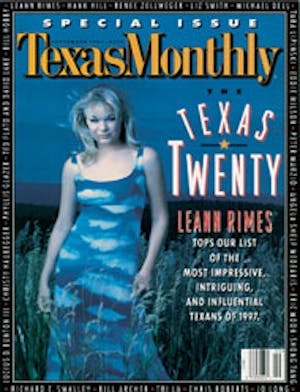The undisputed royalty of Texas ranches, the King Ranch has long lived up to its name. Established in 1853, the empire now commands 825,000 acres and an equally big chunk of Texas’ collective imagination; on its roster of demigods, Captain Richard King ranks only a notch or two below the Alamo heroes. In theory, then, the discovery of previously unknown daguerreotypes of the King family ought to provide statewide delight. The result, however, has been national controversy, and the ranch is not amused.
The disputed portraits belonged to the late Alice King Estill Johnson, a great-granddaughter of Captain King and his wife, Henrietta Chamberlain King. The King Ranch’s longtime archivist, Bruce Cheeseman, purchased some three thousand items from Johnson’s estate—mostly letters and other family papers. However, Cheeseman declined to acquire the portraits. Subsequently, a Baltimore collector, Tim Norris, snapped them up. Norris—with his sister Rebecca—deals in daguerreotypes, an early form of photograph that existed only from 1839 through the mid-1860’s. Knowing that the provenance of the “dags,” as he calls them, was unassailable, Norris set out to confirm the identity of the sitters. The amount of evidence he amassed surprised even him. The suspected portrait of Captain King, for example, bore a variety of physical details recounted in The King Ranch, the 1957 history by Tom Lea—most tellingly, a scarred nostril. A variety of photo-documentarians seconded Norris’ opinion that two other portraits were of Henrietta King.
Elated, Norris wrote the King Ranch in the summer of 1995, proffering his proof. Cheeseman swiftly but courteously rebutted him and still sticks to his guns: “The daguerreotypes,” he told me flatly, “are not of the Kings.” Norris was undeterred. On the basis of his meticulous research, the portraits were accepted by the renowned New York auction house Sotheby’s for a photograph auction last October. The auction catalog listed an estimated value of $40,000 to $60,000 for the group of “cased images” and persuasively condensed three of Norris’ main selling points: the strong resemblance of the daguerreotypes to authenticated portraits, the fact that the lack of identification was “not unusual for portraits that have never circulated outside of a family’s possession,” and the argument that if they are indeed portraits of the King family, “they would fill in a gap in known daguerreotypes of that family, a gap that has always been curious in light of King’s ability to pay for such items.”
Despite the hype, however, word of the King Ranch’s skepticism was out. Only a few bidders responded, and none neared the minimum Norris would accept. Today he is still in possession of the eight portraits as well as a fully authenticated case of high dudgeon. “Sotheby’s was scared of the King Ranch,” he says. “To the King Ranch I’m just some nut who tries to call ’em up and cause trouble.” Replies Larry Worden, the King Ranch general counsel: “We’re not claiming we’re absolutely right or Mr. Norris is absolutely wrong. We just have a difference of opinion.”
- More About:
- Texas History
- Art
- King Ranch







